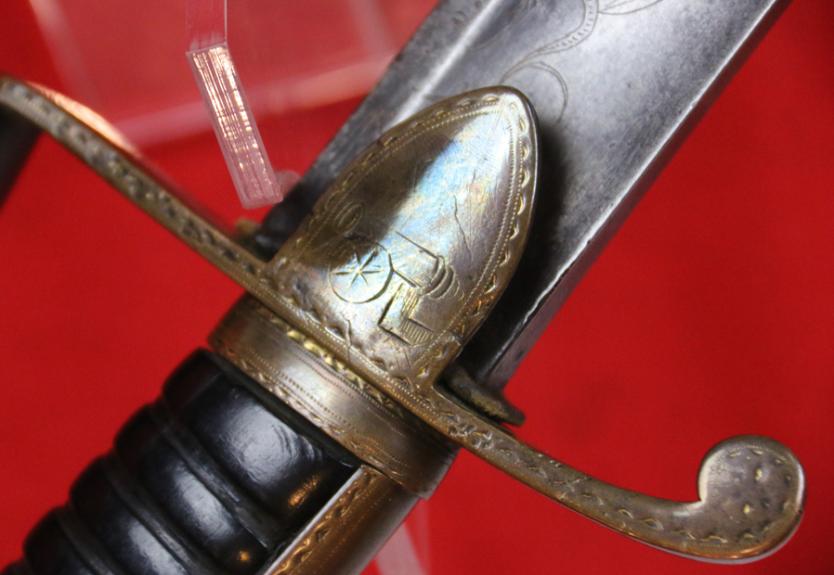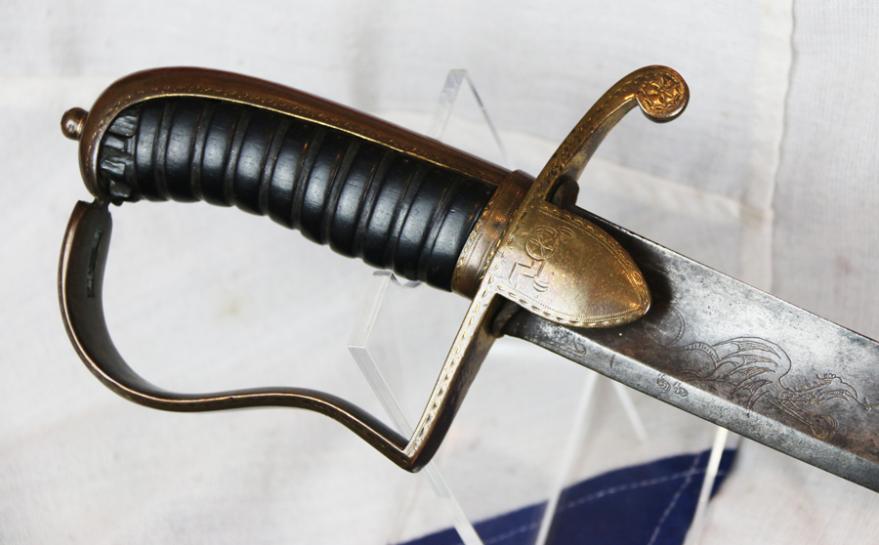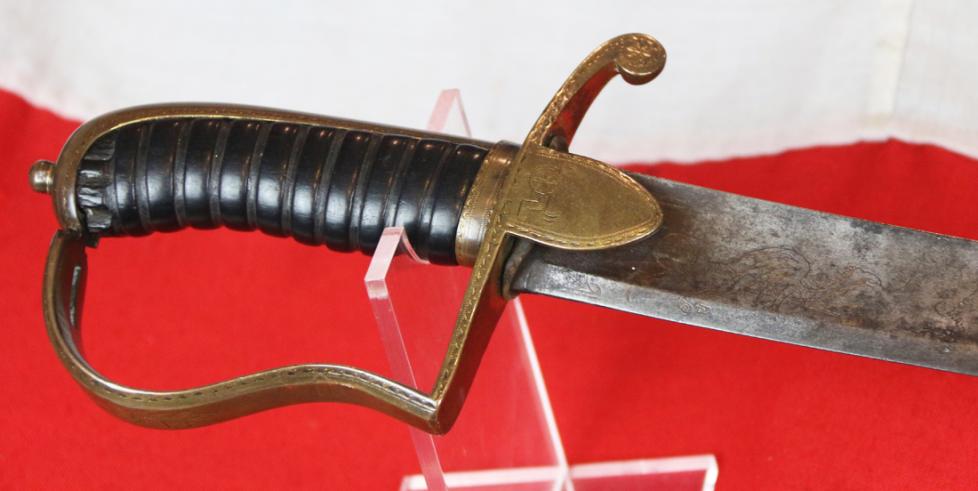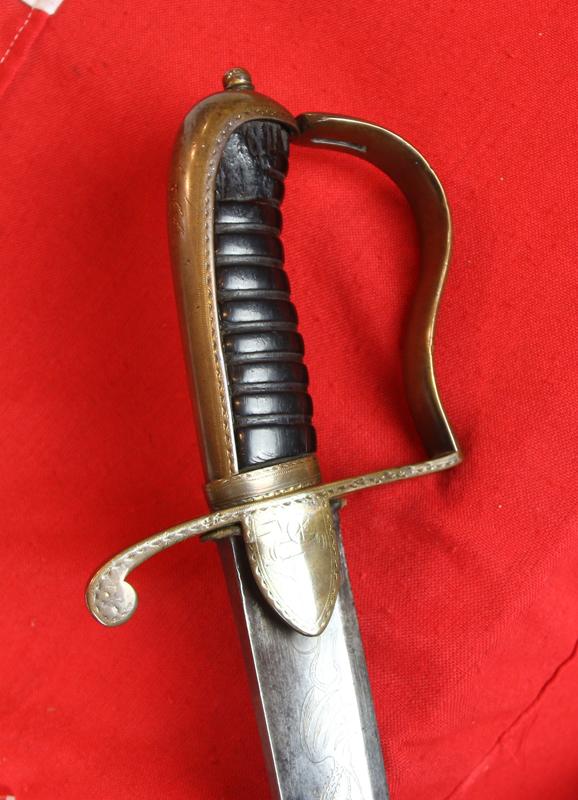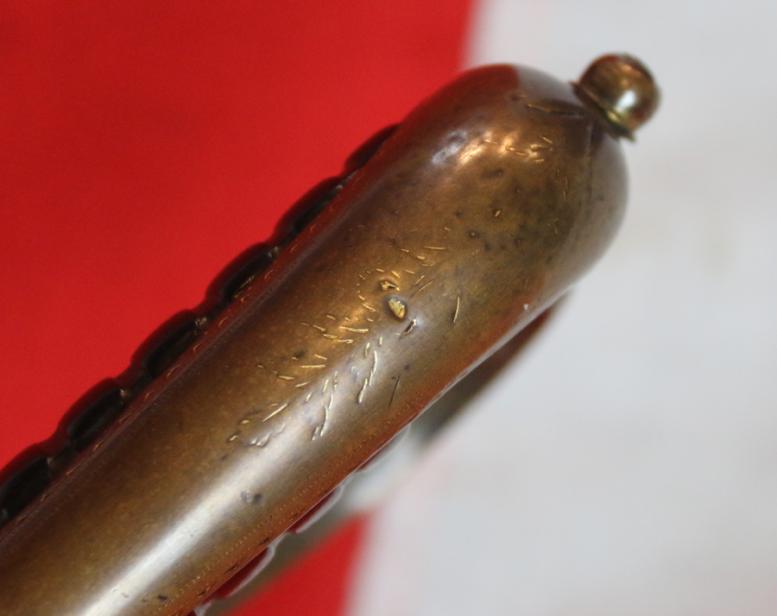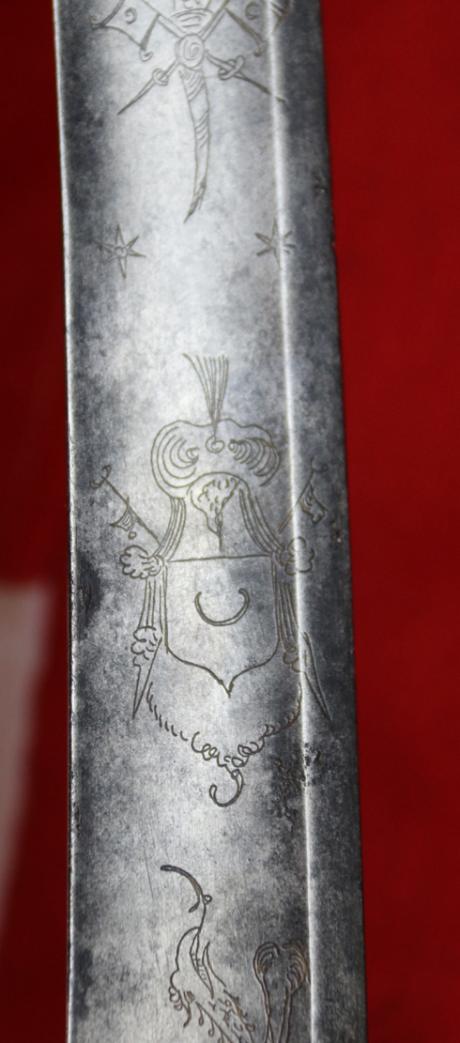A Most Rare 1796 Royal Artillery & Royal Horse Artillery Officer's Sword Of The Napoleonic Wars
A very rarely seen King George IIIrd Royal [Horse] Artillery officer’s 1796 pattern sword, blade 30" etched with trophies etc, brass hilt with Royal Artillery cannon engraved on both langets and with foliate designs etc. Beautifully engraved blade and overall is superb condition for its age, naturally it has all the usual signs of combat use, but superb none the less. The surviving number of early Napoleonic period regimentally marked British Royal [Horse] Artillery officer's swords are so few that the similar 1796 Light Dragoon and Light Infantry pattern swords outnumber them, likely 50 to 1. A collector could seek from decade to decade and never actually find another fine regimentally marked example. Used by officers of both Artillery and Horse Artillery. The regiment was involved in all major campaigns of the Napoleonic Wars; in 1804, naval artillery was transferred to the Royal Marine Artillery, while the Royal Irish Artillery lost its separate status in 1810 after the 1800 Union. This period also saw development of the Congreve rocket; based on an existing Indian design, these were the first solid-fuel projectiles used by the British army and two rocket troops were established in 1814. Their use in the War of 1812 is referenced in the line "rocket's red glare" which appears in the Star-Spangled Banner The Napoleonic Wars saw the need to provide fire-support for the cavalry so a formation of Horse Artillery was created in 1793 with two troops of Royal Horse Artillery (RHA) being raised, joined by two more in November 1793. The Royal Irish Artillery was absorbed into the Royal Artillery in 1801 to produce twelve RHA troops and a hundred RA companies in 10 battalions. Cannon [interestingly, the plural of cannon is cannon] were a vital part of warfare at the time of Waterloo, with the ability to rip through massed ranks of troops and inflict terrible casualties.
In 1780 Captain Thomas Blomfield RA was appointed Inspector of Artillery and Superintendent of the Royal Brass Foundry. Three years later he was given responsibility for re-organising the Ordnance Department. At the same time he was experimenting with new forms of ordnance. The resultant Blomfield guns had thicker breeches, thinner chases and a cascabel ring to control recoil, making them stronger without increasing their weight.
The Blomfield 9-pounder cannon was introduced to the Royal Artillery (RA) in 1805 as a response to the heavier French calibre guns. At Waterloo Wellington had 157 pieces but only 60 were 9-pdrs, in 12 batteries. The remaining 13 batteries had 6-pdrs and howitzers. Interestingly, the Dutch-Belgian and Brunswick Artillery, who fought alongside the British at Waterloo, used French cannon (known as An. XI Ordnance). Wellington employed his Royal Horse Artillery very effectively during the battle as a mobile reserve to plug holes in his line. For example, with Hougoumont under attack, Major Bull’s troop was brought forward in support from its original position towards the rear of the allied position.
The allied artillery faced 246 pieces in 34 French batteries. As was his usual tactic, Napoleon started the battle with a heavy artillery bombardment on the Allied line to soften up the enemy.
Cannon on both sides used round-shot that was lethal against columns of infantry, knocking down several men at once for as long as the ball continued to travel. Case shot or canister (tin coated iron cans) packed with smaller iron balls was devastating at close range. Only the British used spherical case (Shrapnel) where a shell was filled with small iron balls. A specially cut wooden fuse detonated a bursting charge.
The technology to produce cannon was an integral part of the Industrial Revolution. Other technological developments were the introduction of water-powered machines, the tin can, improved metal alloys, accurately bored cylinders for steam engines, and even ordnance survey maps. No scabbard
Code: 23319
1395.00 GBP


